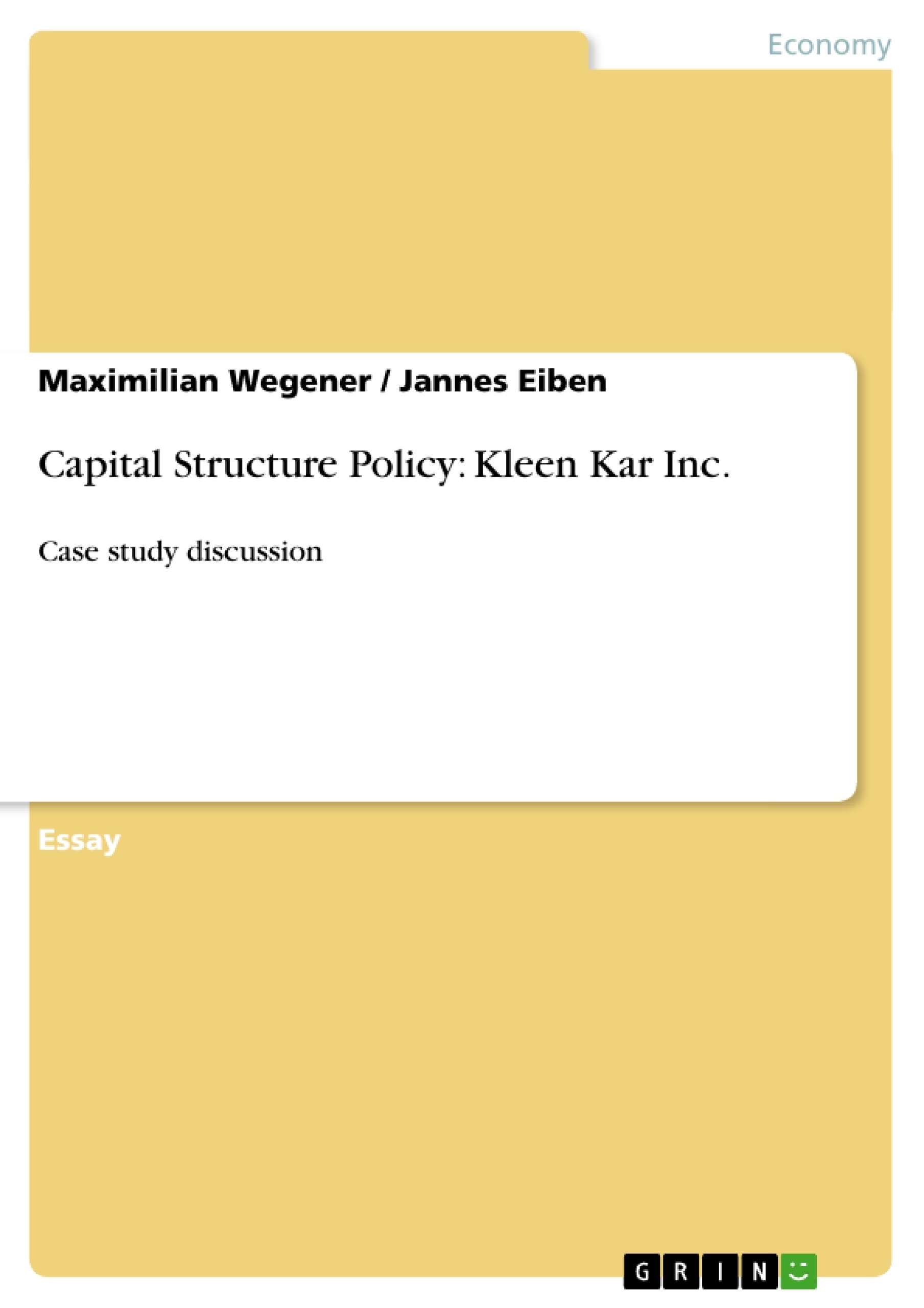Leseprobe
Table of Contents
1. Questions
2. Appendix
2.1 Appendix A: Income statement / table
2.2 Appendix B: MM and Miller Model
2.3 Appendix C: Figure 1 – Company value for debt levels
2.4 Appendix D: Figure 2 – WACC & Price
2.5 Appendix E: Different risk scenarios
1. Questions
1A) Business risk is the risk to firm’s stockholders without debt. Business risk can be measured by the standard deviation (later referred to as: SD) of “return of capital invested” . Typical sources of business risk are factors associated with day-to-day operations of the business, such as input price-, demand-, sales price- and currency variability or the ability to innovate and the extent of operating leverage used. The establishment of long-term contracts can mitigate business risk with suppliers or distributors or with hedging strategies in case of currency risks. On the other hand, financial risk is the risk stockholders bear, because of the use of debt. In the case of debt usage the stockholders bear all the business risk, because debt holders receive a fixed interest payment.
1B/C) The additional risk from the debt can be measured, if one compares the levered beta to the unlevered beta. The levered beta should be higher than the unlevered and therefor react more severe to broad market movements, reflecting the additional risk. Moreover, since the beta is part of the CAPM model, the required return for equity holders rises which makes perfect sense, since equity holders want to be compensated for the additional risk from financial leverage. Leverage increases stockholders ROE, because the denominator of is smaller since consists of debt and equity, in contrast to a all equity financed company. Finally one can compare the SD of a levered and unlevered firm. The higher ROE comes at the cost of an increased SD, because of the higher variability of ROE.
1D) A higher business risk might distract managers from using debt, because they are not certain if they can make interest payments. This would increase the probability of bankruptcy, loss of ownership by shareholders and place a job risk on managers. In addition, mature, low growth companies that have more certain future cash flows or derive their earnings mainly from fixed assets in place and earnings are more likely to increase their debt usage, because of the tax shield and the lower financial distress cost, whereas for start-ups or R&D intensive companies the financial distress cost overweight the benefits from debt. Furthermore, the probability that managers engage in entrenchment and make other than optimal decisions for shareholders falls with increased debt usage.
2A) See appendix A.
2B) See appendix A.
[...]
- Arbeit zitieren
- Maximilian Wegener (Autor:in)Jannes Eiben (Autor:in), 2012, Capital Structure Policy: Kleen Kar Inc., München, GRIN Verlag, https://www.grin.com/document/215048
Kostenlos Autor werden






















Kommentare